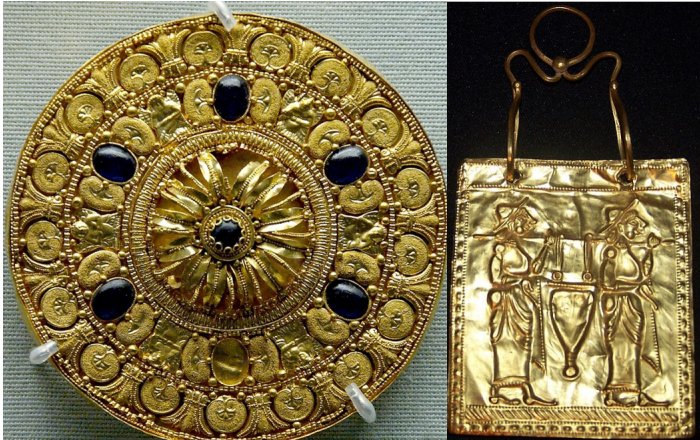Mysterious Etruscans: Skilled Sailors And Master Craftsmen
A. Sutherland - AncientPages.com - About 3000 years ago, a mysterious people called the Etruscans settled in a region of Central Italy known as Etruria. They were one of the most influential civilizations in ancient Italy before the rise of the Romans.
Although these ancient people were much closer to us in time, they were even more enigmatic and inaccessible than other ancient cultures such as Crete, Mesopotamia, or Mycenae, and we still have much to learn about them.
Researchers deciphered the language, but most Etruscan texts remain obscure because the language bears very little relation to other known languages. Scholars have recorded some thirteen thousand Etruscan inscriptions; the phonetic sounds of the Greek alphabet are known, so it also helps to reconstruct the Etruscan language's sound. At the same time, extensive texts left by this civilization are rare.
The origin of the Etruscans is lost in prehistory. According to Livy (Titus Livius, 59 BC-AD 17), the Etruscans had a rich literature, but almost all of it disappeared.
A few generations before Livy's time, young Romans studied the Etruscan literature as meticulously as they later did the Greek, but except for brief inscriptions on tombs, mirrors, or pottery, none of this work has survived. So, all we know about the Etruscans comes mainly from Greek and Roman sources. The Greeks called their land "Hesperia," and the Etruscans were called "Tyrrhenians," probably after Tyrrhenus, fifth in descent from the god Zeus and one of the founders of the Etruscan Federation of twelve cities.
Extent of Etruscan civilisation and the twelve Etruscan League cities. Image credit: Norman Einstein (Based on a map from The National Geographic Magazine Vol.173 No.6 June 1988). CC BY-SA 3.0
Ancient Etruria was situated on the western side of Italy, between the Apennines and the Tyrrhenian Sea. It extended from the land about the Arno River in the north to the Tiber River in the south and included modern Tuscany, which takes its name from the Etruscans. At one period, the Etruscans controlled Campania and the basin of the Po River and reached the northern Adriatic. Speculations regarding their origin have never ceased. Some scholars speculated they came from the Danube, while others proposed the North of the Alps region.
Herodotus claimed their arrival from Lydia, modern Anatolia in Asia Minor, but the Etruscans did not speak Lydian, worship Lydian gods or follow Lydian laws.
Many of the most famous cities in Italy were originally Etruscan. Among them are Pisa, Arezzo, Cortona, Siena, Volterra, Orvieto, Perugia, Assisi, and others also worth mentioning. Rome was once an Etruscan center, and the islands of Elba and Corsica were also Etruscan.
Left: Ear-stud decorated with a rosette surrounded by concentric bands. Gold with vitreous glass paste insets, 530–480 BC; source; Right: The Ancient Thracian Golden Orphism book, discovered in 1955, in the Struma River valley, in Bulgaria. It is exposed in the National History Museum in Sofia. Image credit: Ivorrusev - CC BY-SA 4.0
But there were other towns, either deserted or forgotten in the decline of Etruscan cultures, such as Veii, Tarquinia, Cerveteri, and Chiusi, where archeologists have found rich remains.
As scientists have not been able to study their language, they have always had to rely on the archeological excavations of their cities and numerous cemeteries. These sites, unfortunately, suffered more than two hundred-year-long plunderings before professional archaeologists could finally enter the ancient sites and begin their work in the field.
Scholars have long analyzed ancient records and tried to decipher the Etruscan inscriptions. Especially by the end of the century, many Etruscan remains were unearthed, painted, and figured pottery, gold vessels with a variety of domestic equipment in the form of candelabra, lamps, beautifully engraved mirrors, terracotta, and bronze objects.
Other priceless items found by diggings, of which many showed Greek and Roman influence - included bracelets, pendants, fibulae, rings, and other jewelry. Others, on the other hand, were not of Roman or Greek origin. They had once belonged to the enigmatic and relatively unknown civilization of people known as the Etruscans.
Discovered tomb paintings shed light on the life of the Etruscans, showing, for example, that women were given an honored place in society.
Urn in the shape of a hut, which represents the typical Etruscan house of the Villanovan phase, 8th century BC, from Vulci, Musée d'art et d'histoire de Genève. Image credit: Dom8Mi - CC BY-SA 3.0
They are depicted as banqueting with male guests and being embraced by their husbands. Also, funerary inscriptions have revealed many names of the deceased's female and male ancestors.
Etruria was rich, and the primary source of this wealth were valuable minerals concentrated in the vicinity of the Metalliferous Hills ('Colline Metallifere') with plenty of copper, iron, zinc, and tin. In exchange for these crucial minerals, the Etruscans could import ivory, silver, and gold, which they appreciated so much.
The mysterious, seafaring Etruscan civilization flourished until the end of the second century B.C. when they were finally included in Roman culture. There is still much to learn about these people, and a fascinating debate regarding the Etruscans continues.
Some scholars believe that the Etruscans were the descendants of an oriental group that settled in western Italy after 1000 BC. Meanwhile, others suggest that the Etruscans were instead an indigenous race with culture and traditions developed in Italy from the beginning. With time, their culture was only subjected to influences from the east.
However, when and where the Etruscans came to Italy is still unclear. Their roots are traced to Turkey rather than Italy.
Written by – A. Sutherland AncientPages.com Staff Writer
Updated on November 8, 2022
Copyright © AncientPages.com All rights reserved. This material may not be published, broadcast, rewritten or redistributed in whole or part without the express written permission of AncientPages.com
Expand for referencesMore From Ancient Pages
-
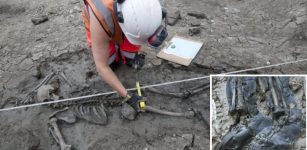 Medieval Mystery Of The Booted Man Found In The Thames Mud
Archaeology | Dec 10, 2018
Medieval Mystery Of The Booted Man Found In The Thames Mud
Archaeology | Dec 10, 2018 -
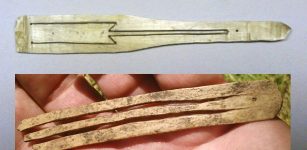 Jew’s Harps: Old Musical Instruments Discovered In Altai Mountains
Archaeology | Jan 9, 2018
Jew’s Harps: Old Musical Instruments Discovered In Altai Mountains
Archaeology | Jan 9, 2018 -
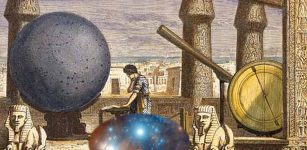 Ancient Egyptians Observed Algol’s Eclipses – Cairo Calendar Analyzed
Archaeology | Dec 19, 2015
Ancient Egyptians Observed Algol’s Eclipses – Cairo Calendar Analyzed
Archaeology | Dec 19, 2015 -
 Roman Tombs Unearthed In Egypt’s Dakhla Oasis
Archaeology | Jan 28, 2019
Roman Tombs Unearthed In Egypt’s Dakhla Oasis
Archaeology | Jan 28, 2019 -
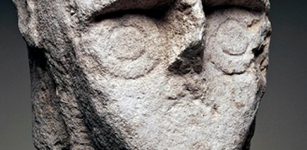 Giants Of Monte Prama – Mysterious Ancient Statues With Unearthly Eyes
Artifacts | Aug 31, 2018
Giants Of Monte Prama – Mysterious Ancient Statues With Unearthly Eyes
Artifacts | Aug 31, 2018 -
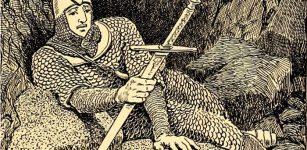 Durendal – Magical Sword Of Knight Roland That Cut Stone Boulders With A Single Strike
Featured Stories | Jan 19, 2022
Durendal – Magical Sword Of Knight Roland That Cut Stone Boulders With A Single Strike
Featured Stories | Jan 19, 2022 -
 Rare 13,000-Year-Old Artifacts And Paleoindian Camp Uncovered in Connecticut Shed New Light On The First Ancient People In America
Archaeology | Mar 18, 2022
Rare 13,000-Year-Old Artifacts And Paleoindian Camp Uncovered in Connecticut Shed New Light On The First Ancient People In America
Archaeology | Mar 18, 2022 -
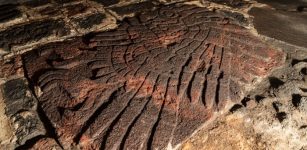 Huge Golden Eagle Relief Made By The Aztecs Discovered At Tenochtitlan
Archaeology | Feb 3, 2021
Huge Golden Eagle Relief Made By The Aztecs Discovered At Tenochtitlan
Archaeology | Feb 3, 2021 -
 Ancient Jericho – City Of Giants And Home Of The Mighty Gibborim
Biblical Mysteries | Jun 28, 2017
Ancient Jericho – City Of Giants And Home Of The Mighty Gibborim
Biblical Mysteries | Jun 28, 2017 -
 Megalithic Cemetery With 49-50M Long Tombs Was Accidentally Found In Poland
Archaeology | Mar 10, 2021
Megalithic Cemetery With 49-50M Long Tombs Was Accidentally Found In Poland
Archaeology | Mar 10, 2021 -
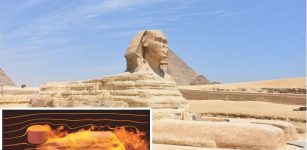 Experiments Show The Great Sphinx May Be A Natural Formation – Scientists Say
Archaeology | Oct 31, 2023
Experiments Show The Great Sphinx May Be A Natural Formation – Scientists Say
Archaeology | Oct 31, 2023 -
 Maori God Pourangahua And His Flying Bird Traversing The Ancient Skies
Featured Stories | Oct 4, 2015
Maori God Pourangahua And His Flying Bird Traversing The Ancient Skies
Featured Stories | Oct 4, 2015 -
 Search For A Viking Cemetery Near Truso Settlement In Janow, Poland – Continues
Archaeology | Jul 23, 2020
Search For A Viking Cemetery Near Truso Settlement In Janow, Poland – Continues
Archaeology | Jul 23, 2020 -
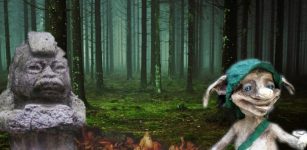 Chaneques: Mischievous Legendary Tricksters In Mexican Folklore
Featured Stories | Apr 14, 2020
Chaneques: Mischievous Legendary Tricksters In Mexican Folklore
Featured Stories | Apr 14, 2020 -
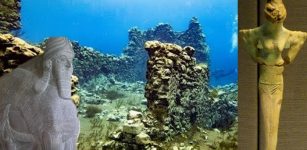 Searching For Dilmun: Underwater Ruins In The Persian Gulf Predate The Pharaohs And Sumer
Civilizations | Apr 24, 2023
Searching For Dilmun: Underwater Ruins In The Persian Gulf Predate The Pharaohs And Sumer
Civilizations | Apr 24, 2023 -
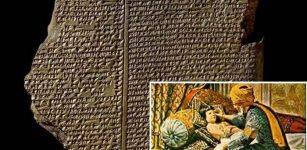 Clay Tablets Reveal Sumerian Doctors Treated Disease With Spells Of Magic And Medicine
Archaeology | Feb 13, 2018
Clay Tablets Reveal Sumerian Doctors Treated Disease With Spells Of Magic And Medicine
Archaeology | Feb 13, 2018 -
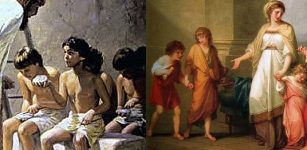 What Was Life Like For Children In Ancient Athens?
Ancient History Facts | Jul 4, 2018
What Was Life Like For Children In Ancient Athens?
Ancient History Facts | Jul 4, 2018 -
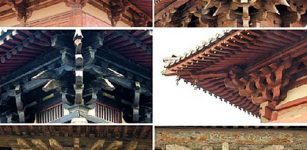 Ancient Secrets Of Dougong Brackets: How 2,500-Year-Old Buildings Could Survive Earthquakes
Ancient History Facts | Jul 31, 2017
Ancient Secrets Of Dougong Brackets: How 2,500-Year-Old Buildings Could Survive Earthquakes
Ancient History Facts | Jul 31, 2017 -
 3,000-Year-Old African Musical Instrument Can Help Modern Medicine
Archaeology | Sep 19, 2018
3,000-Year-Old African Musical Instrument Can Help Modern Medicine
Archaeology | Sep 19, 2018 -
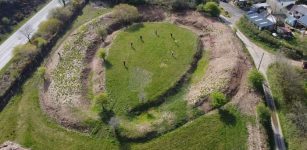 Huge Ancient Underground Stone Circle Discovered Inside Cornwall Neolithic Henge
Archaeology | May 21, 2022
Huge Ancient Underground Stone Circle Discovered Inside Cornwall Neolithic Henge
Archaeology | May 21, 2022



